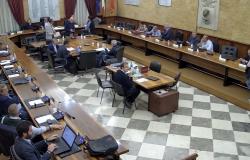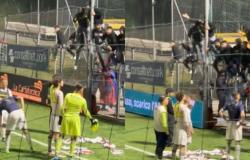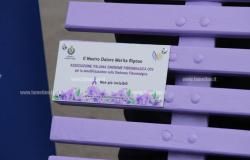At dawn on 28 December 1908, the peaceful awakening of the Sicilian winter was overturned by one of the most catastrophic natural events in the history of Italy: the earthquake that struck Messina and its region with a devastating force, reaching a magnitude of 7.1 on the Richter scale. The earth shook for several minutes, leaving behind an unrecognizable landscape, while a massive tsunami, emerging from the depths of the Ionian Sea, hit the coasts with unparalleled fury, sweeping away what the earthquake had spared. Around 100,000 people lost their lives in what would be remembered as one of the most tragic natural disasters in Europe. This article aims to remember and analyze the dynamics, consequences and response to a disaster that indelibly marked the history of Messina and the entire nation.
The catastrophe in detail
In the early morning hours of December 28, 1908, the city of Messina in Sicily was shaken by an earthquake of magnitude 7.1. The earthquake, one of the strongest and most destructive in Europe, had its epicenter in the Strait of Messina, extending with strong tremors for many kilometers in the surrounding areas. The telluric phenomenon, of considerable intensity, caused a devastating chain reaction which led to the outbreak of fires, collapses and the formation of landslides in various locations. The city of Reggio Calabria was also seriously affected by these tragic events.
Immediately after the main earthquake, a frightening tsunami hit the coast of the Strait, further worsening the already disastrous situation. Waves up to 12 meters high crashed with unprecedented violence against the banks, overwhelming the structures that remained standing, sweeping away what had only been damaged by the earthquake and leaving behind a panorama of immeasurable destruction. The victims, including women, men and children, were approximately 100,000a number that ranks Messina among the most serious natural disasters of the 20th century.
The dynamics of the disaster
- There duration of the earthquake, estimated to last about 30 seconds, was enough to raze most of the buildings, making years of history and architecture evanescent.
- Question of time: The earthquake struck at 5:20 am, a time when most people were still in their homes, dramatically increasing the number of victims.
- Historical data tells of a second peak of the tsunami that occurred about 10 minutes after the first impact, hitting survivors seeking refuge or intent on rescuing the first victims.
- Communications and access roads were almost entirely destroyed destroyedenormously hindering the rescue and evacuation operations of the inhabitants and the injured.
- The late arrival of assistancealso due to the slowness of the means of communication at the time and the Christmas holidays, led to an increase in the number of victims, many of whom died while waiting for help.
- The aftershocks they continued for days, increasing the sense of panic among the survivors and complicating the search and rescue phases.
- The reconstruction, started in the years following the disaster, highly considered the seismic risk, leading to the birth of a new one legislation regarding construction in areas at high seismic risk.
- The Scientific studies on the Messina earthquake of 1908 they played a fundamental role in the understanding of seismic phenomena and in the development of modern seismology.
The Messina earthquake and tsunami left a deep scar in the urban and social fabric of the city, a warning for future generations about the unpredictability and devastating force of natural phenomena. The memory of that dramatic event still lives in the collective imagination, as an example of pain but also of resilience and rebirth.







